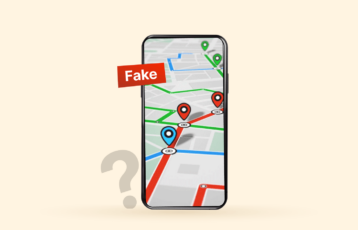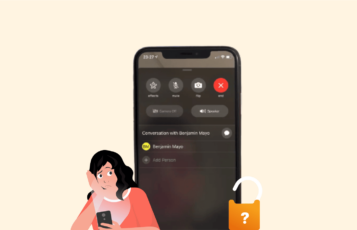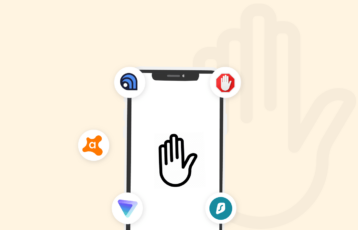
Poppy Playtime is becoming the hottest trend right now, especially among children. Many parents consider it a kid-friendly game set in a toy factory. But don’t get fooled by its innocent appearance. This game is hiding a dark secret. Trust me, the Huggy Wuggy ads, the game’s villain, are right when they claim he’ll “squeeze you until you pop!”
However, it may seem surprising that Poppy Playtime is a horror game that can be scary. In this article, we’ll explore the safety aspects of Poppy Playtime for kids to address the parents’ concerns.
Can kids play Poppy Playtime? Potential risks
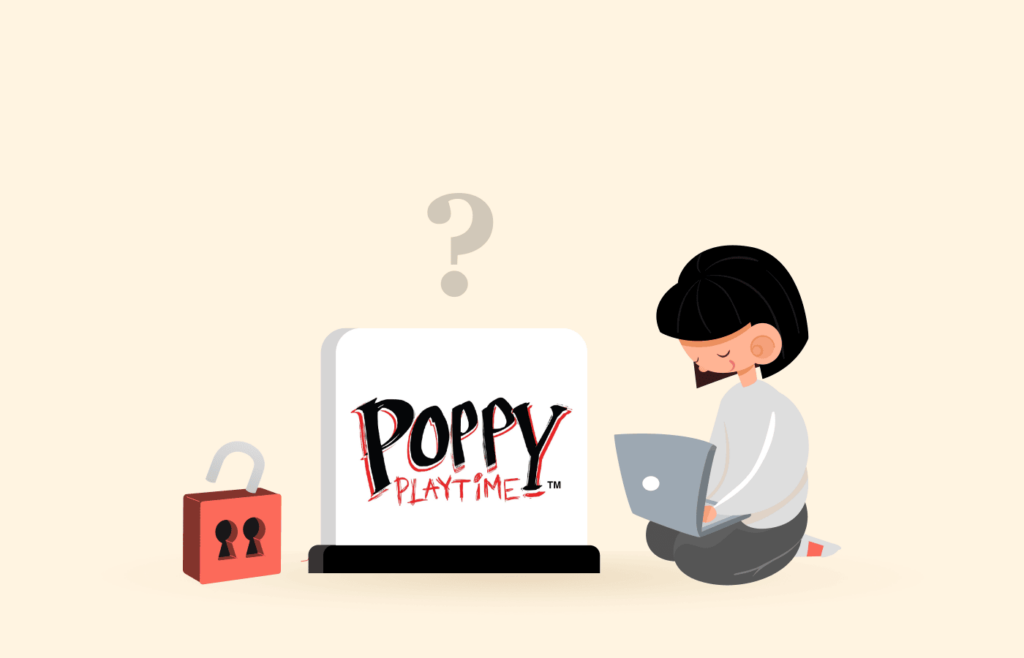
Being a horror game, Poppy Playtime utilizes many elements of the horror genre. How these affect kids depends on the kids’ nature. While some 10 to 11-year-olds are brave and can survive various horror scenes without problem, they might seriously shake others. This means you first have to know your kid before deciding to let them play this game.
However, read on if you wonder how scary this game can be. Here are the potential risks that playing Poppy Playtime can expose your child to.
Jumpscares
Jumpscares are very common in horror storytelling, and Poppy Playtime uses them extensively. The way a jumpscare works is straightforward. You have a scene where everything is calm and quiet, and then a sudden image changes. A loud and scary sound will often follow this change in images.
Huggy Wuggy and Mommy Long Legs frequently appear out of nowhere, chasing the player through the entire factory. One of the parent reviewers on Common Sense Media complained that the jumpscares baffled them and their 14-year-old, who couldn’t later complete the game.
When we tested the game, though, the experience was more funny than scary. That means what matters most is the psyche of the person playing.
Anxiety
If a kid who’s not too experienced with seeing horror movies or games jumps into Poppy Playtime, their anxiety level can increase. They may constantly feel that someone is after them, especially when alone or in the dark. This can also extend to their perspectives of dolls, toys, and other objects that children play with.
For healthy development, children and young teens should avoid situations that make them abnormally anxious. That’s because they are still growing and may not have the required emotional maturity to process frightening scenes.
Sleep disorder
When anxiety gets too much in children or even adults, it can affect sleep schedules. This can be due to the fear of falling asleep or sleeping and waking up from nightmares. Common Sense Media explicitly calls Poppy Playtime a fuel for nightmares.
When this continues for a long time, the child may start experiencing insomnia, which means total or partial sleep loss. For students aged 6 to 13, who are the target demography of Poppy Playtime, the Sleep Foundation recommends 9 to 12 hours of sleep. This amount of recommended sleep keeps the brain sharp, helping the kid stay alert during the day. When children cannot sleep, their mental and physical development could be in danger.
Gore and violence
There aren’t scenes portraying violence throughout the released chapters. Although there are inferences, such as when Huggy opens its mouth to rip the player’s head off, the game cuts away immediately to avoid displaying any on-screen gore or violence.
However, for a game based on homicidal and sentient toys, it’s impossible to avoid scenes that depict gore and violence. From the moment the player steps into the factory, they see signs that numerous kinds of death have occurred. Blood splashes cover all the floors and walls, and the dolls are very hostile.
One of the more violent scenes occurred in Chapter 2 when trying to outsmart and defeat Mommy Long Legs, the antagonist. The player lures her into a chamber where she gets trapped in an industrial grinder. While there was no blood, her agonizing scream as the machine ground her can still scare kids who are just maturing.
Game addiction
Even if your kids manage to overcome their fear of Poppy Playtime, they might get addicted to playing it. Poppy Playtime is a fun game involving simple yet mental puzzles and interesting mechanics. You may find your kids spending more time on it than they actually should.
Ordinarily, a chapter should take about an hour or two to complete, based on factors like skill and experience. However, video game addiction may make them always return to the game for replays and to find Easter eggs.
Prolonged, unchecked addiction has various consequences, including obesity and sleep disorders. Your kids might also indulge in piracy because many PC gamers use gaming torrent sites rather than paying for legitimate copies of games. Besides, it may also affect their ability to form social relationships or participate in social gatherings.
This is why adult supervision is crucial for these kinds of games. The adult can help the child balance virtual reality and real life by dictating when gaming is allowed.
Self-endangering behavior
Poppy Playtime’s world is a large factory that resembles a playhouse. The player interacts with various mechanical devices to navigate the factory and defeat the hostile toys.
Activities like touching electrical devices, running through tight holes and vents, and jumping down stairs frequently occur in this game. Encouraged by these scenes, little children may try to recreate them in real life and seriously endanger themselves.
What is Poppy Playtime?

Poppy Playtime is a popular video game. American game developer Mob Entertainment developed it, adding many horror elements to make it scary. Unlike traditional games, where you buy once and later get updates, Poppy Playtime is in chapters. You complete one chapter and wait for the developers to release the next one.
Steam users play this game a lot. According to SteamCharts, a gaming analysis website, over 13,000 people played Poppy Playtime in January 2023. SteamSpy also reports that the game has about 5 million players.
You can play Chapters 1 and 2 on Windows, iOS, and Android devices. The company later announced a third chapter on YouTube and Poppy Playtime’s website, finally releasing it on Steam in January 2024.
Mob released the first chapter on Steam in October 2021 and iOS and Android devices in March 2022. Later that year, Windows users got the second chapter in May, while iOS and Android devices had to wait until August.
Poppy Playtime is highly popular among kids because it looks like a children’s game. It features dolls, toys, stuffed animals, and a colorful world that children will love. However, you need to be careful not to let this confuse you. It contains many horror elements; you should monitor your kids when playing it.
Meet Huggy Wuggy in Chapter 1, “A Tight Squeeze”
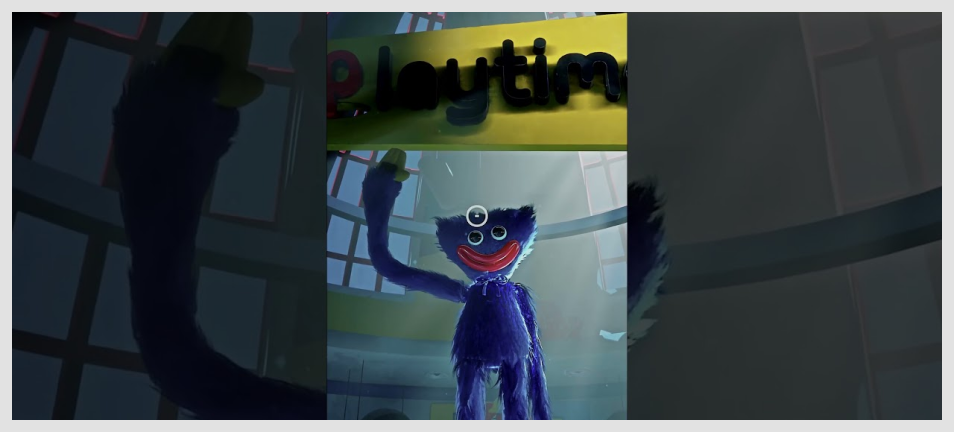
In the first chapter, you’ll meet Huggy Wuggy. While this blue stuffed animal initially looks harmless, he’s very dangerous. He is sentient and has razor-sharp teeth that can easily tear heads off.
To complete this chapter, you need to defeat Huggy. You do this by solving some puzzles and using special tools. Notably, you use an object called a Grabpack to complete electrical circuits, unlock locations, and grab and move objects.
As you solve puzzles, you gradually get the factory operational. That’s because you turn on old machines and equipment and can get around more places. This enables you to defeat Huggy, causing it to drop from a high location.
The game’s plot explains that you used to work at Playtime Co. — a factory manufacturing various toys and dolls. The toys suddenly became sentient and killed many employees, leading to the factory being abandoned and closed. You then return many years later to unravel the mystery behind the factory and uncover why the toys are killing people.
Defeat Mommy Long Legs in Chapter 2, “Fly in a Web”
In Chapter 2, you will discover that Huggy Wuggy didn’t die. Instead, another toy named Mommy Long Legs picked it up at the end of the chapters. Once you see Mommy Long, you’ll understand the reason for her name. She is elastic and can extend her limbs and head, similar to the Grabpack that you’re wearing.
Unlike Huggy, who doesn’t speak, Mommy Long Legs communicates with you frequently. She challenges you to win three games and promises to help you escape if you win. Things didn’t go as planned, and you had to stop her by getting her trapped in an industrial grinder.
How is information about Poppy Playtime spreading?
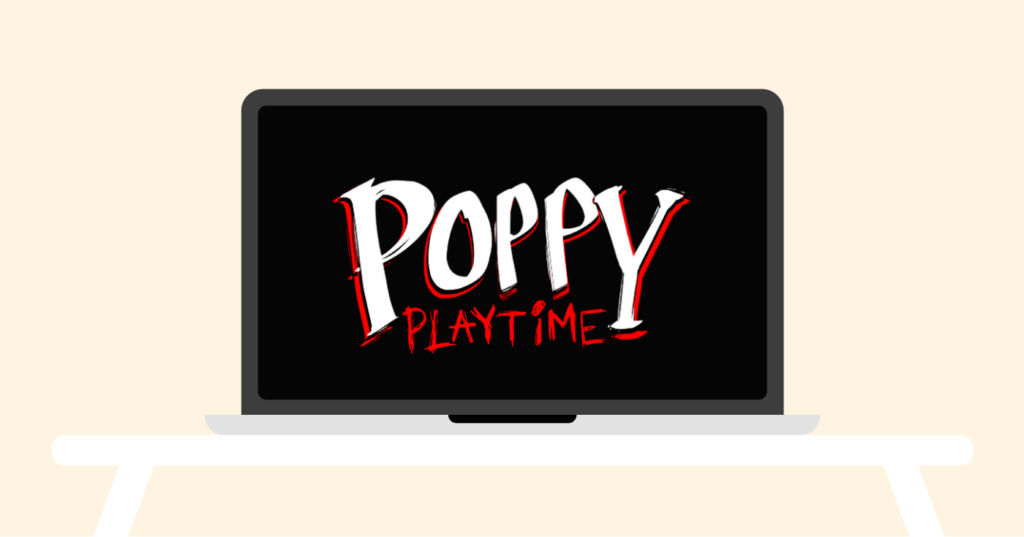
In this digital age, information quickly spreads from one part of the globe to the other. Here are some of the main channels where people share information about Poppy Playtime.
1. YouTube
As the internet’s top video hub, YouTube spotlights the Poppy Playtime craze through popular influencers and game developers themselves. Major YouTubers like Markiplier stream Poppy Playtime to over 20 million scared viewers. Additionally, Poppy Playtime creators Mob Games use their official YouTube channel to promote the game directly to millions of subscribers through trailers and videos, further boosting exposure.
Today’s kids have constant access to YouTube, so limiting their knowledge of Poppy Playtime’s growing online notoriety will prove difficult. Monitoring the disturbing content surrounding this viral gaming sensation continues to emerge as a formidable challenge for vigilant parents in the digital age.
2. Friends and schools
After the first chapter’s release in 2021, Poppy Playtime was all the rage among kids and young adolescents. There was massive interest in the first chapter of this game, and some kids thought that Huggy Wuggy was adorable, even with its sharp teeth.
The character’s popularity has seen it become a stuffed toy that’s distributed globally. Kids worldwide carry this furry doll around in blue, pink, and other colors. There are many reasons for the character’s popularity, but the likeliest one might be just because… it’s fun. It can also help kids process their fears, especially about stuffed animals and dolls.
No matter how much you try to hide the game from your child, they’ll most likely hear about it from their friends in school or on social media. They hear about it and also start asking you for it, which is how trends spread.
3. Roblox
Roblox is an online gaming platform that allows users to program and create games without any knowledge of programming languages. As you’d expect, users have created dozens of Poppy Playtime variants on the platform. So, if your kids have Roblox, there’s a high chance they might come across one of them and become curious about the real deal.
Most of these games typically keep the name of the source material, Poppy Playtime. Nonetheless, others try to be creative by giving distinct names, such as “Loppy Playtime” and “Survival The Huggy Wuggy.” Most try to recreate the game’s mechanics, but certain elements tend to be missing.
For example, developing the Grabpack’s throwing arms is difficult, so players will usually just have to go around touching the desired objects. The worldbuilding is usually impressive, though, and most contain virtually every room and chamber in the game.
Poppy Playtime age rating
Is Poppy Playtime actually for kids? What is its age rating? All these are valid questions. Given the game’s content and what some parents say about it, it’s normal to be curious.
This game has no defined, all-agreed-upon age rating, though organizations that have reviewed it have assigned different ratings based on their perceptions.
Common Sense Media rated it 13+ based on reviews from 9 parents. Each parent gave a rating they thought was fair. One rating mentioned the game was only appropriate for adults 18 and older. Two believed it was okay for a 15-year-old child; one rated it 14+, another one rated it 13+, three rated it 12+, and only one rated it 8+.
Certain children-focused organizations also rated it 8+, while Spiel Times, a popular entertainment website, rated it 12+. The 8+ and 12+ ratings seem the most common among websites.
You won’t find any information if you’re wondering what Mob Entertainment rates it. Instead, you’ll find its App Store and Play Store ratings, both deeming it suitable for teens.
Ultimately, it’s up to you as a parent to understand your child before letting them play this game.
Our verdict: Poppy Playtime is a horror game unsuitable for children
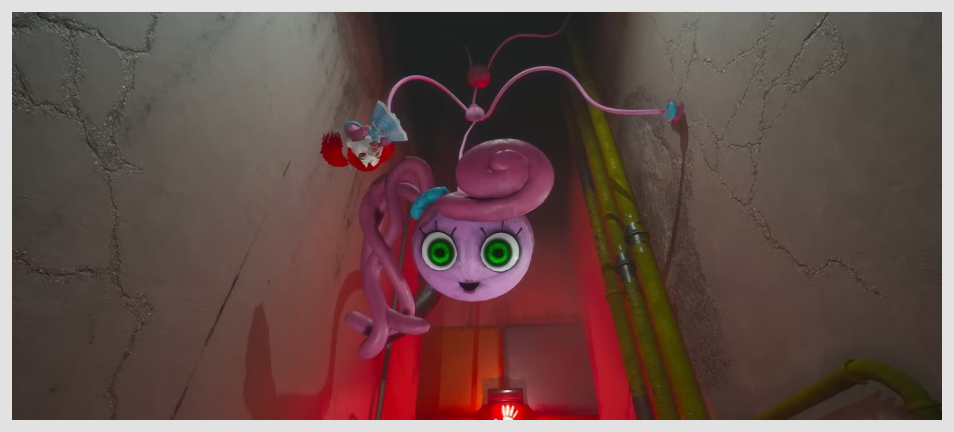
After experiencing the game first-hand and conducting thorough research, we can say that Poppy Playtime isn’t suitable for younger audiences. Despite the game featuring toy characters and being set in a toy manufacturing factory, it’s still a horror game that can severely startle children.
When the game became viral, it quickly spread to mainstream social media apps and even kids-focused ones, like YouTube Kids. On YouTube, numerous kids’ channels also uploaded various Poppy Playtime reactions and gameplay videos. The CEO of Mob Entertainment is also quoted as saying the game is suitable for children aged eight and up.
Most parents, however, think differently, claiming that only children aged 15 and above should play the game. Many platforms, like the Google Play Store and Apple App Store, have rated the game 12+.
Hence, it’s okay to conclude that Poppy Playtime is only suitable for a teenage audience, similar to its counterpart, Five Nights at Freddy’s.
How long is Poppy Playtime?
Firstly, Poppy Playtime is episodic and still ongoing. Three chapters are already available for play, and the developers have announced a fourth one. Secondly, each chapter differs in length, with Chapter 1 being the shortest at about 35 minutes. Chapter 2 is about twice the length of Chapter 1, and Chapter 3 is roughly thrice that length.
The game’s duration also depends on the player’s skill level. Solving the puzzles and defeating the antagonists quickly speeds up the completion time.
FAQs
Depending on your device, you can get Poppy Playtime for free or pay for it. Windows users can get Chapter 1 for free via Steam, but iOS and Android users must pay $2.99 to access it. Chapter 2 costs $4.99 on Android, $5.99 on iOS, and $9.99 on Steam. And the latest Chapter 3 costs $14.99 on Steam.
Poppy Playtime chapters 1 and 2 are available on Windows via Steam, iOS, and Android. Chapter 3, however, is currently only available on Steam.
There’s no official rating for Poppy Playtime, and various organizations have rated it differently. Some say it’s okay for children 8 and above, and others say only teens 12 and older should play it.


